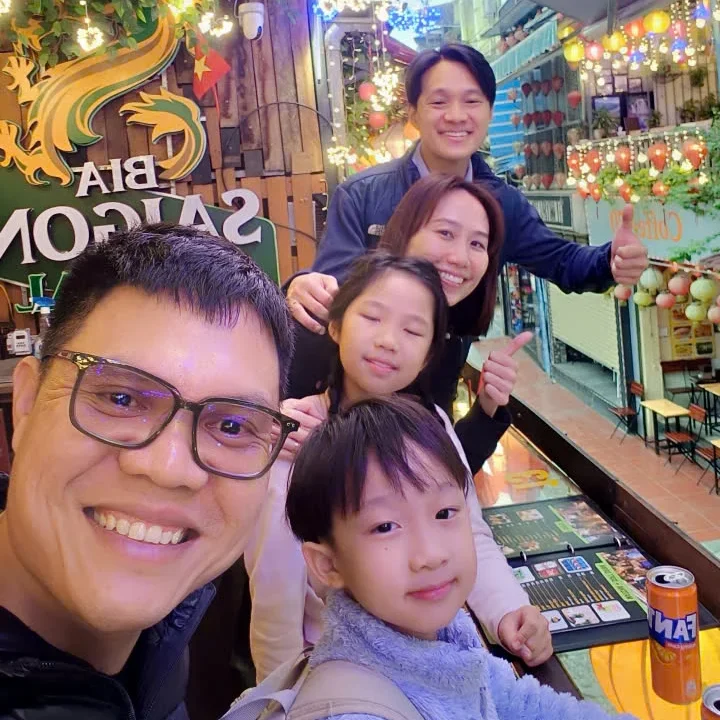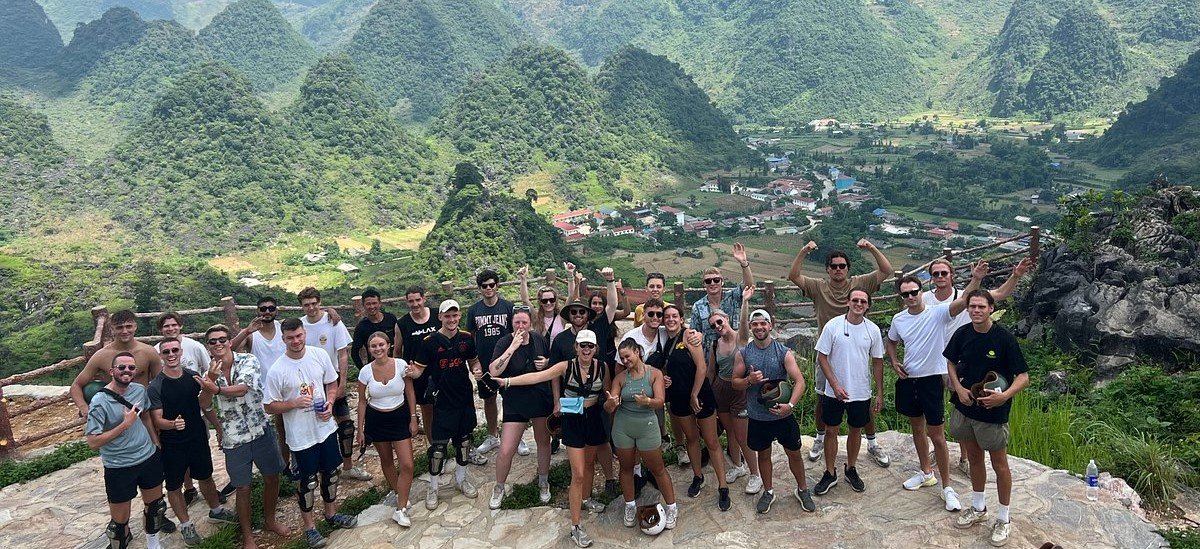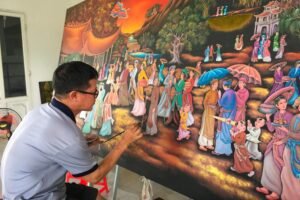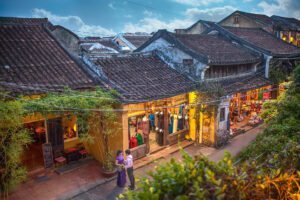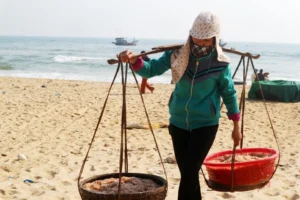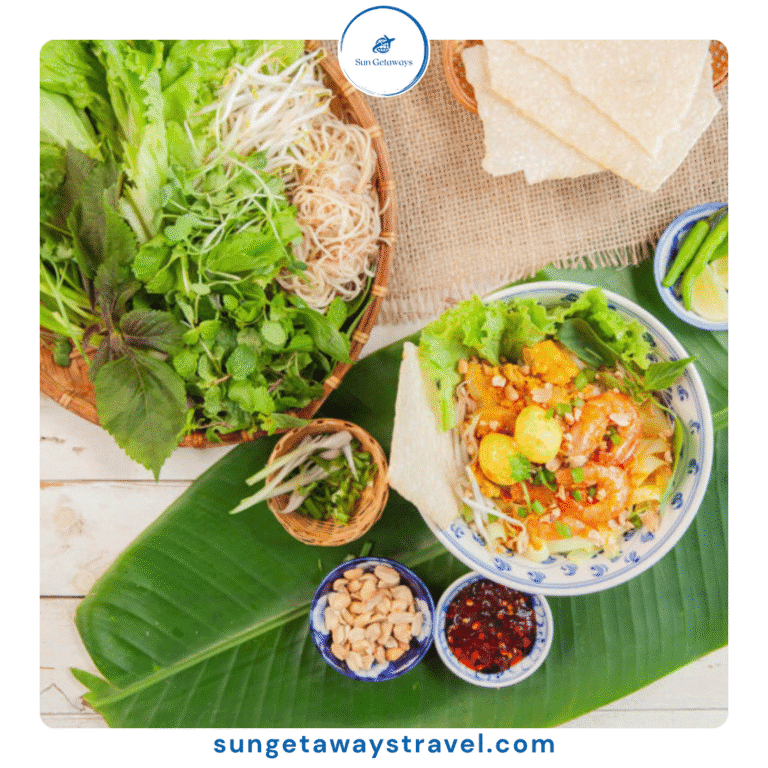The Elegance of Ao Dai: A Symbol of Vietnamese Traditional Clothing
Vietnamese traditional clothing, such as the Ao Dai, carries centuries of history, culture, and identity. Among these garments, the Ao Dai stands out as an enduring icon of Vietnamese elegance and pride. With its graceful silhouette, rich cultural significance, and timeless appeal, the Ao Dai encapsulates the spirit of Vietnam.
Moreover, the Ao Dai, a quintessential Vietnamese dress, has evolved over time, adapting to changing fashion trends while preserving its core essence. In this article, we delve into the origins, evolution, and cultural symbolism of the Ao Dai, while exploring its modern relevance and its role in representing Vietnamese traditional clothing.
The Origins of the Ao Dai
The Ao Dai, pronounced “ow-yai” in the southern dialect and “ow-zai” in the northern, translates to “long dress” in English. Its origins can be traced back to Vietnam’s historical dynasties, when Vietnamese Clothing symbolized social hierarchy and identity.
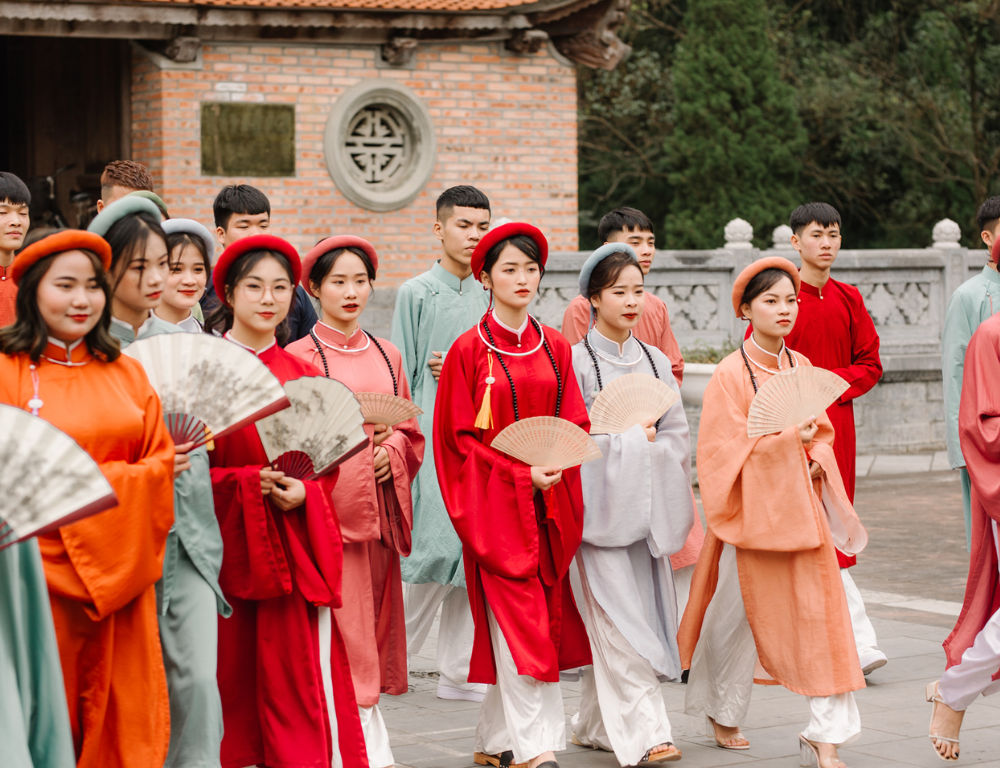

1. Early Influences
The Ao Dai draws inspiration from the Chinese Hanfu due to centuries of cultural exchange during Chinese rule. Initially, it was a long tunic worn over loose pants, reflecting Confucian values of modesty and elegance.
2. The Nguyen Dynasty and the Ao Dai
During the Nguyen Dynasty (1802–1945), the Ao Dai evolved into a symbol of national pride. Emperor Gia Long’s decree mandated the adoption of the Ao Dai as official attire for the royal court and the elite, solidifying its place in Vietnamese culture.
🇻🇳 Experience the vibrant atmosphere of Vietnamese festivals!
The Design and Symbolism of the Ao Dai
The Ao Dai is renowned for its flattering and functional design. It consists of two main components:
- A fitted, long tunic: Extending to the knees or ankles, it features side slits for ease of movement.
- Loose silk trousers: Typically in contrasting or complementary colors, they complete the outfit’s flowy aesthetic.


3. Symbolism in Colors and Patterns
Colors and patterns in Ao Dai hold cultural meanings, reflecting Vietnamese values and traditions:
- Red: Represents luck, happiness, and prosperity, often worn at weddings and celebrations.
- White: Symbolizes purity and youth, commonly seen in school uniforms for girls.
- Lotus motifs: Reflect purity and resilience, aligning with Buddhist beliefs.
4. Fabric Choices
The Ao Dai, a quintessential piece of Vietnamese traditional clothing, is often made from silk, satin, or chiffon. These materials not only highlight its elegance but also ensure comfort in Vietnam’s tropical climate.
🇻🇳 Learn about proper Vietnamese etiquette and customs.
The Evolution of the Ao Dai
Over time, the Ao Dai, a quintessential piece of Vietnamese traditional clothing, has undergone significant changes, reflecting Vietnam’s social and cultural shifts. Furthermore, these alterations have not only modernized the Vietnamese dress but have also preserved its cultural essence.
5. The Ao Dai in the 18th and 19th Centuries
Initially, the Ao Dai was loose-fitting, catering to traditional notions of modesty. The style included wide sleeves and a straight-cut design, emphasizing simplicity and practicality.
6. The Influence of French Colonialism
The French colonial period introduced Western tailoring techniques. Consequently, designers began adapting the Ao Dai, a cornerstone of Vietnamese traditional clothing, to include a tighter fit, higher collars, and more elaborate embroidery, resulting in a fascinating blend of Eastern tradition and Western refinement.
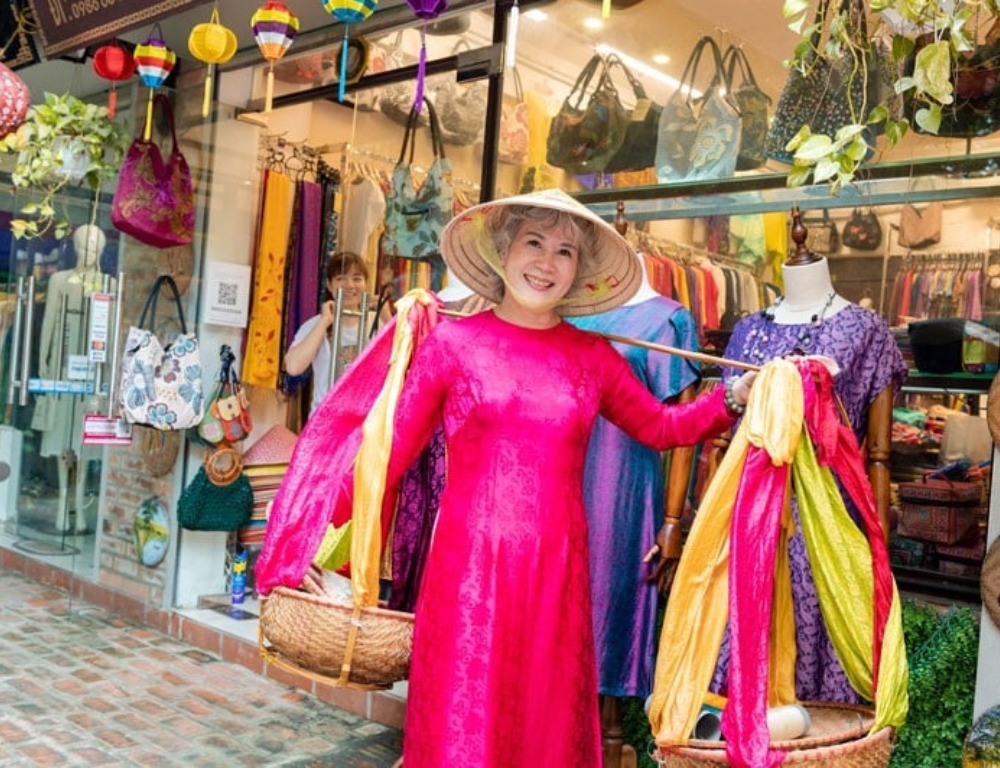

7. The Ao Dai Revolution in the 20th Century
In the 1930s, Vietnamese artist Cat Tuong (nicknamed Le Mur) modernized the Ao Dai, transforming it into a form-fitting garment that celebrated the feminine figure. This version, known as the “Le Mur Ao Dai,” became a symbol of sophistication and modernity.
i8. The Ao Dai in the Post-War Era
After the Vietnam War, the Ao Dai continued to symbolize cultural resilience. Women wore it to honor their heritage, even amidst economic hardships.
🔥 You might want to check out Hanoi Old Quarter: A Guide to Its Hidden Alleys & Historic Charm
The Ao Dai in Vietnamese Culture
The Ao Dai is more than just clothing—it’s a cultural emblem that plays a role in various aspects of Vietnamese life. Furthermore, as a quintessential piece of Vietnamese traditional clothing, the Ao Dai is deeply intertwined with the nation’s history and identity.
9. Weddings and Celebrations
In weddings, the Ao Dai takes center stage. Brides often wear red or gold versions adorned with intricate embroidery, while grooms don complementary designs. The Ao Dai represents unity, tradition, and the hope for a prosperous future.
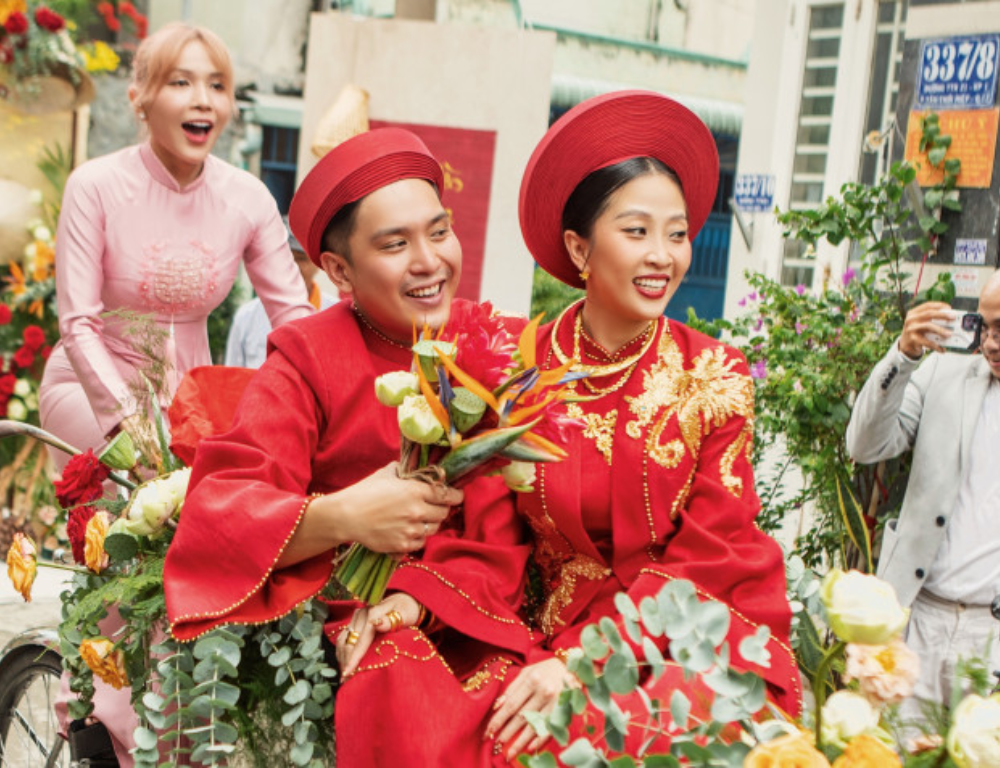

10. School Uniforms
High school girls across Vietnam wear white Ao Dai uniforms, symbolizing innocence and purity. This practice fosters a sense of cultural pride among the younger generation.
11. Festivals and National Events
During Tet Holiday (Vietnamese Lunar New Year) and other cultural festivals, people don Ao Dai in vibrant colors to celebrate their heritage. These events showcase the garment’s versatility and timelessness.
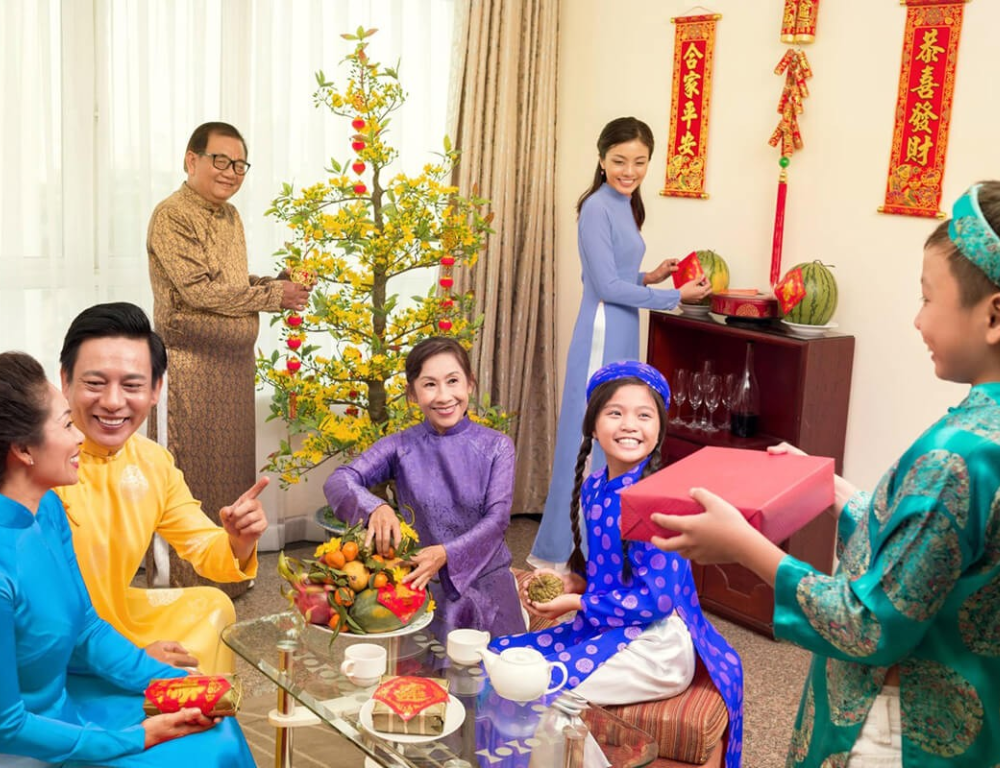

🇻🇳 Uncover the cultural significance of Understanding Vietnamese Culture: A Guide for First-Time Visitors
Modern Interpretations of the Ao Dai
As Vietnam modernizes, the Ao Dai, a quintessential example of Vietnamese traditional clothing, has adapted to suit contemporary tastes without losing its essence. This Vietnamese dress has evolved, incorporating modern elements while preserving its cultural significance.
12. Fashion Innovations
Modern Ao Dai designs feature shorter tunics, bolder patterns, and unconventional materials like denim or lace. Designers incorporate global trends while maintaining the garment’s traditional roots.
13. Ao Dai on the Global Stage
Vietnamese designers have brought the Ao Dai to international fashion shows, highlighting its universal appeal. Celebrities and diplomats often wear Ao Dai-inspired outfits to promote Vietnamese Culture abroad.
📸 Immerse yourself in Vietnam’s captivating culture. From ancient temples to vibrant festivals, there’s something for everyone. | Contact us via WhatsApp or follow Sun Getaways Travel Fanpage for personalized trip planning. Or follow these posts to explore the cultural wonders of Vietnam:
Craftsmanship Behind the Ao Dai
Creating an Ao Dai requires skilled artisans who combine traditional techniques with modern sensibilities. Consequently, the production of this iconic Vietnamese traditional clothing involves a delicate balance of heritage and contemporary design.
14. Tailoring Excellence
Each Ao Dai is custom-made to fit the wearer’s measurements perfectly, ensuring elegance and comfort. Tailors use meticulous hand-stitching to achieve the garment’s flawless finish.
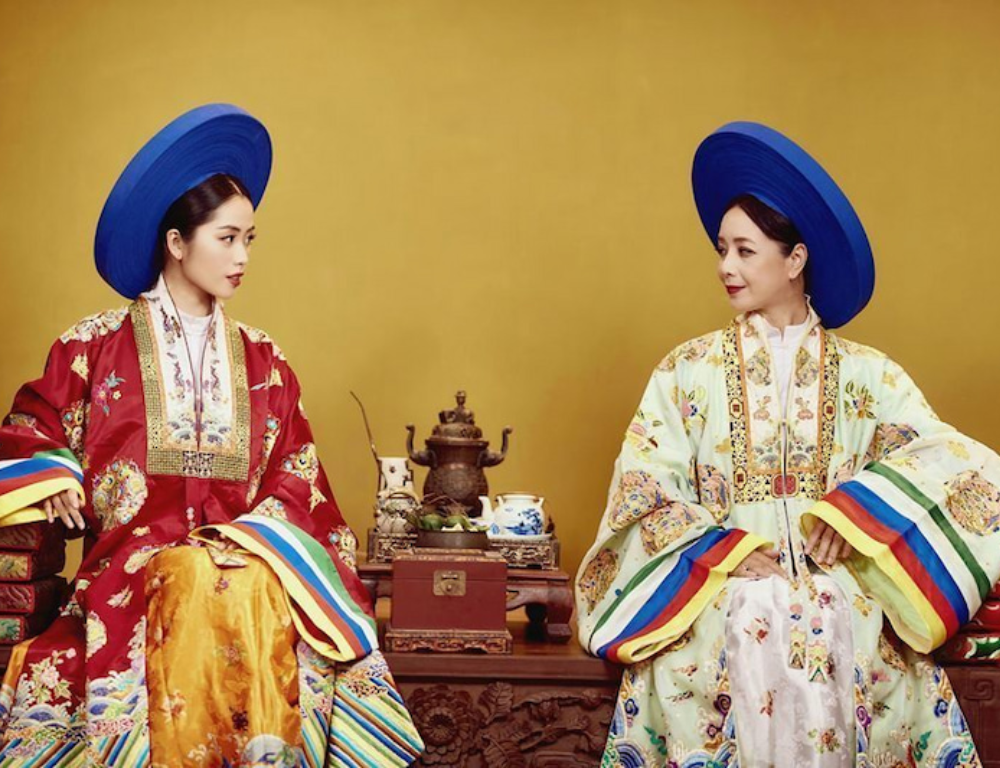
15. Hand-Embroidered Details
Embroidery is a defining feature of high-quality Ao Dai. Common motifs include dragons, phoenixes, and floral patterns, each carrying symbolic meanings.
Cultural Significance of the Ao Dai
The Ao Dai is more than an outfit; it represents Vietnam’s history, values, and identity.
16. A Symbol of National Unity
Despite regional variations, the Ao Dai, a beloved symbol of Vietnamese traditional clothing, unites Vietnam’s diverse communities. Whether in the northern mountains or southern deltas, this iconic Vietnamese dress reflects shared cultural heritage.
17. Empowering Women
The Ao Dai celebrates femininity and grace while empowering women to express their identity. Its form-fitting design highlights confidence and elegance.
🔥 Delve into Vietnamese history and culture at fascinating Hanoi Museums!
Challenges and Preservation
In an era of globalization, the Ao Dai, a quintessential example of Vietnamese traditional clothing, faces challenges in maintaining its relevance. However, its timeless elegance and deep cultural significance continue to captivate both locals and foreigners alike.
18. Western Influence
The rise of Western-style clothing has led to a decline in everyday Ao Dai usage, particularly among the younger generation.
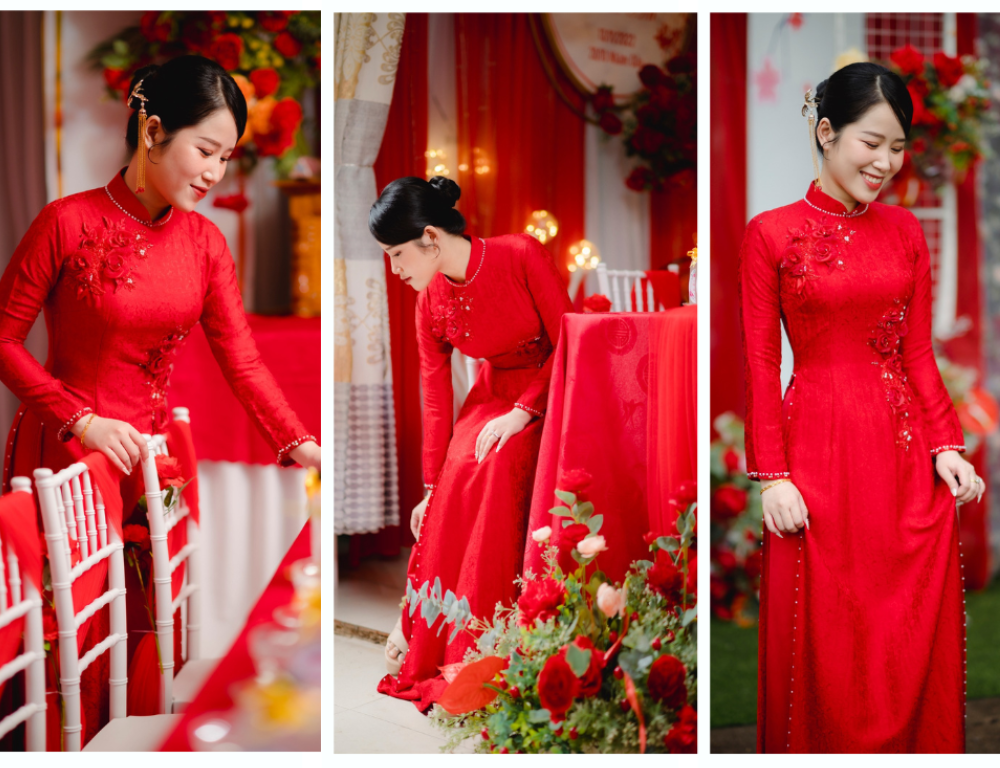

19. Cultural Preservation Efforts
To counter this trend, initiatives like Ao Dai festivals and school programs aim to promote the garment’s significance. The government and cultural organizations also encourage its inclusion in formal events.
The Future of the Ao Dai
From its roots as a traditional Vietnamese dress, the Ao Dai has evolved into a versatile garment that embodies both heritage and contemporary style. As a symbol of Vietnamese traditional clothing, the Ao Dai continues to be a popular choice for special occasions and daily wear. Moreover, with the growing emphasis on eco-fashion, designers are exploring sustainable materials and practices to create Ao Dai that align with modern values.
FAQs
1. What is the Ao Dai, and why is it important?
The Ao Dai is a traditional Vietnamese outfit consisting of a long tunic and trousers. It symbolizes Vietnam’s cultural heritage, elegance, and pride.
2. How has the Ao Dai evolved over time?
The Ao Dai has evolved from loose, modest designs to modern, form-fitting styles influenced by Western fashion.
3. When is the Ao Dai typically worn?
The Ao Dai is worn at weddings, cultural festivals, school events, and formal occasions, symbolizing tradition and celebration.
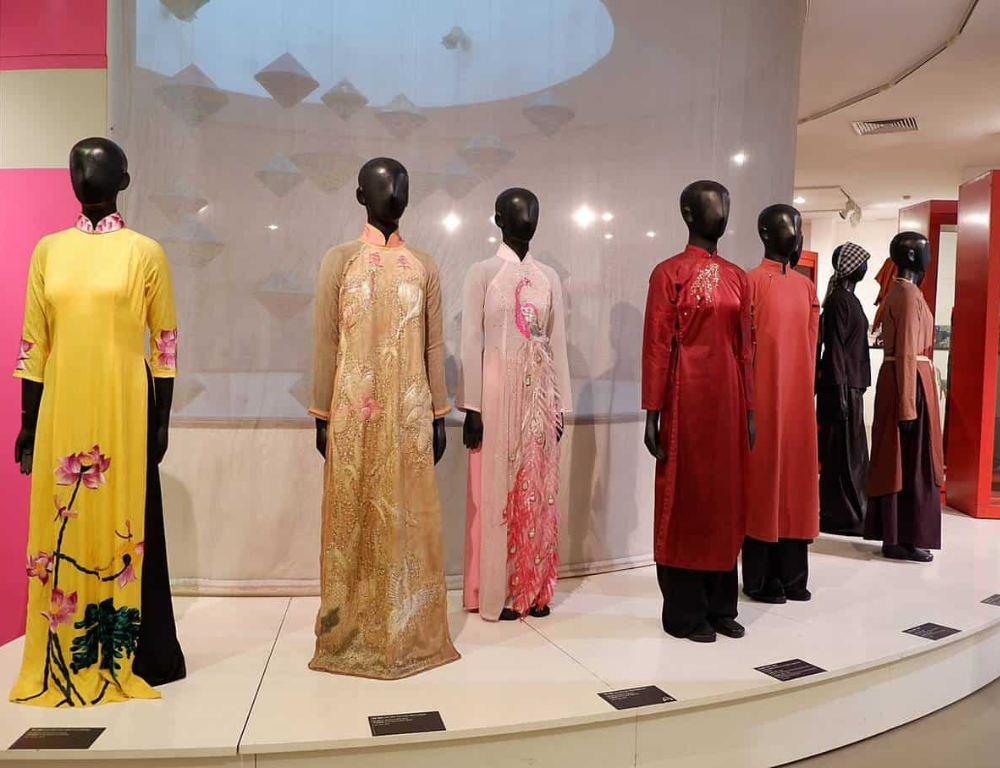

4. What materials are used to make the Ao Dai?
Common materials include silk, satin, chiffon, and, more recently, sustainable fabrics for eco-friendly designs.
5. How does the Ao Dai represent Vietnamese identity?
The Ao Dai embodies Vietnam’s values of modesty, elegance, and resilience, serving as a unifying cultural icon across regions and generations.
👉 Prepare for your adventure with this cultural guide to Vietnam.
Conclusion
The Ao Dai stands as a timeless symbol of Vietnamese traditional clothing, embodying elegance, cultural pride, and resilience. From its origins in the royal courts to its prominence in modern fashion, the Ao Dai reflects Vietnam’s rich heritage and adaptability. Moreover, as a quintessential piece of Vietnamese dress, the Ao Dai continues to evolve, remaining a beloved representation of Vietnam’s identity, connecting generations and inspiring global admiration.
Experience Vietnam like never before with Sun Getaways Travel. Our all-inclusive trips cover every detail, from accommodations and transportation to unforgettable experiences, depending on your interests (Our Customized Private Tour for each customer to Vietnam 🇻🇳). Ready to embark on your next adventure?
Ask a question
Leave a Comment (0)
No questions yet. Be the first to ask a question!

